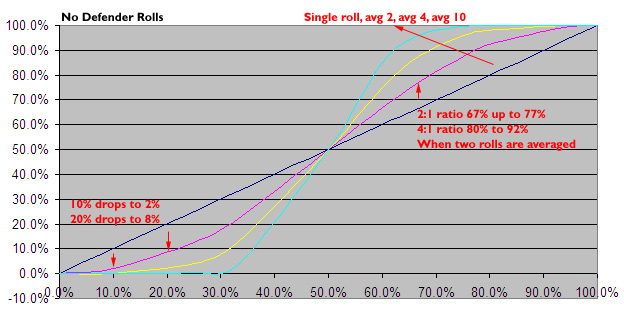Mike B, thanks for the correction about the combat calculation change.
But as others have said, the corrected description doesn't change the concerns being voiced in this thread - the result remains much the same.
The change you describe does not affect streakiness except as a side-effect. What it does affect is the odds of a win when the attacker's strength (after all modifiers of course) is different from the defender's strength. The greater that difference, the more the odds change vs. the previous calculation method.
The sample cases posted by Arathorn for our latest understanding of this change show that the impact of the change is very large in some common situations involving contemporary units. (Not just the infamous spearman/tank.)
The strong will become stronger and the weak will become weaker. This greatly changes balance in the ways already pointed out in this thread (less strategic options, already strong unique units become overpowering, etc.)
I'm curious what the underlying motivation is for changing the combat calculation.
If the motivation is to reduce the odds of a spearman winning a single battle vs. a tank, then there are other ways to do that without affecting core game balance - why not use a technique which is specific to that class of problem without altering all other combat odds at the same time?
If the motivation is to reduce perceived "streakiness", why not do exactly that instead of altering the odds? That can be done by having combat calculations remember recent results and modify odds in each new battle to "correct" overall results toward the expected average. (The rate of convergence toward expected averages could easily be parameter controlled.) A change such as this would leave existing odds and combat calculators exactly as they are, but would reduce pure randomness by reducing the mathematically correct frequency of random streaks to better match the expectations held by most people

And a change like this could be used in other areas such as leader frequency. You could maintain a proper average of 1 leader per 16 elite wins while hugely reducing the chance of long leaderless streaks (which are mathematically correct but feel wrong to most people, as well as making for frustrating gameplay.)

 )
) 